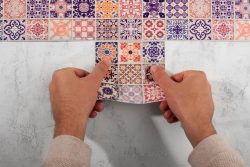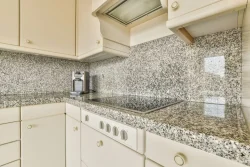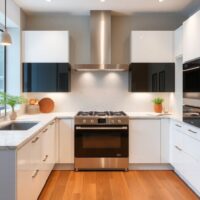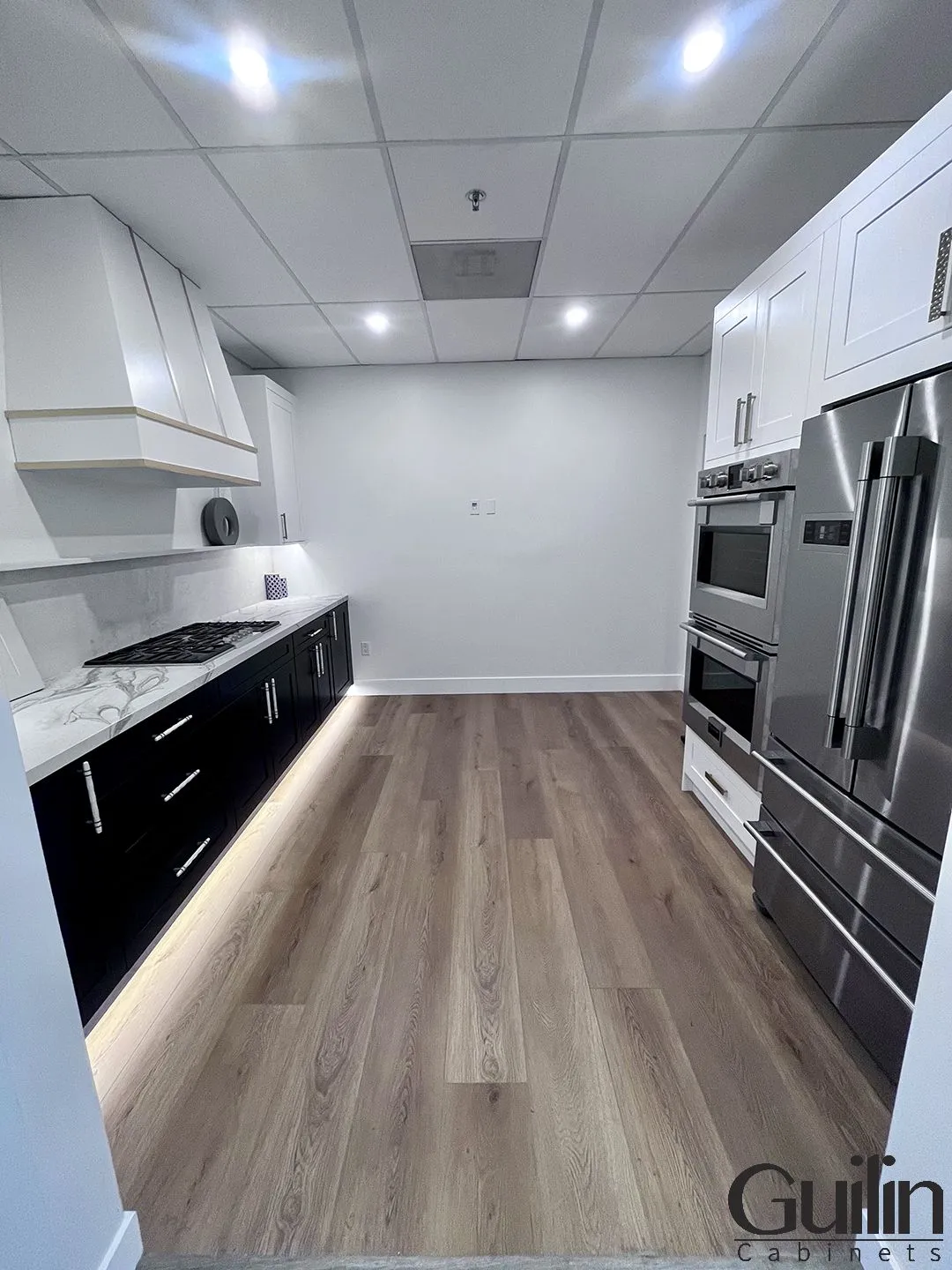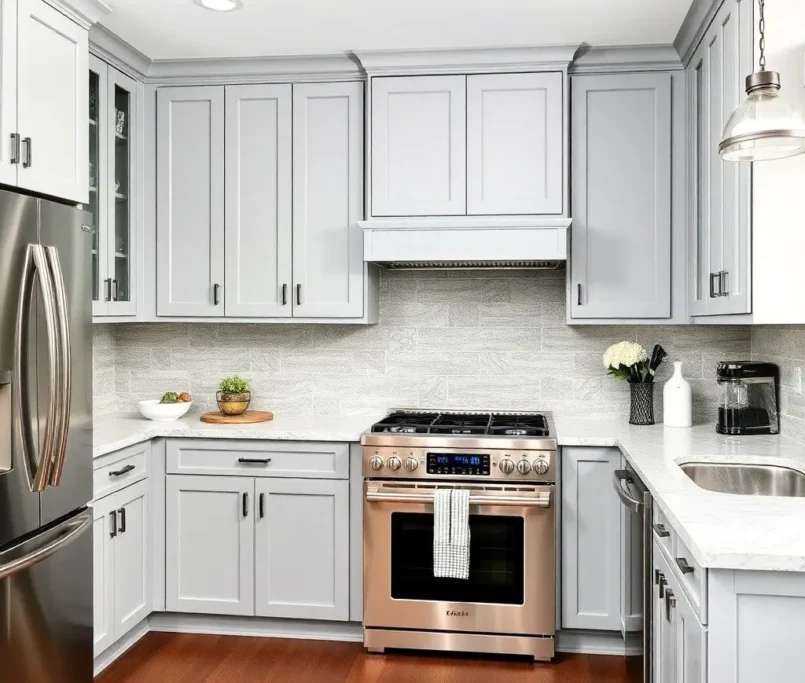Backsplashes are crucial elements in kitchen design, and a porcelain kitchen backsplash offers a blend of beauty and practicality. You might appreciate the durability and easy maintenance that porcelain provides, but it’s vital to weigh other factors too. Consider the potential for chipping and slipping on wet surfaces, which can pose safety risks. As you explore your options, understanding both the advantages and drawbacks of porcelain will help you make an informed decision that enhances your kitchen space.
All About Porcelain Backsplashes
The porcelain backsplash is a popular choice for many kitchens due to its durability and aesthetic appeal. It seamlessly combines beauty and functionality, making it a worthwhile investment for your culinary space. To better understand porcelain backsplashes, it is crucial to explore into their foundational elements and what sets them apart from other materials.
=> Read More: Granite Backsplashes: Pros, Cons, and Options

What is Porcelain?
Around the world, porcelain is celebrated for its strength and elegant finish. This material is made from a type of clay that is fired at high temperatures, leading to a dense and non-porous surface. This process not only enhances the strength of the tile but also gives it a vitreous and shiny appearance, which is highly sought after in kitchen design.
=> Read More: How to Remove Kitchen Tile Backsplash: A Complete Guide to

Types of Porcelain Backsplashes
Understanding the different types of porcelain backsplashes can help you choose the best option for your kitchen. Here’s a breakdown of the main categories:
| Category | Type | Description |
| 1. By Finish | a. Glossy Porcelain | Reflective surface that enhances brightness in smaller spaces. Easy to clean but can show smudges more readily. |
| b. Matte Porcelain | Subtle and contemporary appearance. Non-reflective and ideal for a more understated look. | |
| c. Textured Porcelain | Mimics natural materials like stone or wood. Adds depth and tactile interest to a backsplash. | |
| 2. By Style | a. Subway Tiles | Classic rectangular tiles arranged in a brick-like pattern. Available in a wide variety of sizes and colors. |
| b. Mosaic Tiles | Small, intricately patterned tiles that create a decorative effect. Often used to highlight certain areas, like behind the stove. | |
| c. Large Format Tiles | Oversized tiles with minimal grout lines for a seamless look. Perfect for modern and minimalist interiors. | |
| d. Patterned Porcelain | Printed designs such as geometric patterns, floral motifs, or vintage-inspired visuals. Creates a bold, artistic focal point. | |
| 3. By Design Inspiration | a. Marble-Look Porcelain | Mimics the elegance of natural marble at a lower cost. Durable and resistant to stains, unlike real marble. |
| b. Wood-Look Porcelain | Offers the warmth and texture of wood without the maintenance issues. Suitable for rustic or transitional styles. | |
| c. Stone-Look Porcelain | Replicates the rugged beauty of natural stone. Works well for industrial or natural-themed designs. | |
| d. Metallic-Effect Porcelain | Adds a sleek, modern, or industrial touch. Reflective surfaces create visual interest in contemporary spaces. | |
| 4. By Installation Method | a. Traditional Tiles | Installed individually with grout, allowing for flexible layouts. |
| b. Porcelain Panels | Large sheets of porcelain for quick installation and minimal grout lines. | |
| c. Peel-and-Stick Porcelain | Easy-to-install options for DIY enthusiasts. |

Another example of porcelain backsplashes includes those that come in various colors and finishes. This versatility allows you to match them with your counter, cabinets, and overall kitchen decor. The fact that they are easy to clean and resist stains and scratches adds to their practicality, making them an excellent choice for a busy kitchen environment.
Pros and Cons Of Porcelain Backsplash
Advantages of Porcelain Kitchen Backsplashes
Some homeowners debate the ideal material for their kitchen backsplash, but porcelain stands out for a multitude of compelling reasons. Below, we will explore the various advantages of choosing a porcelain backsplash, spanning aesthetic appeal, durability, longevity, and low maintenance requirements.
=> Read More: Types of Kitchen Backsplash Materials: From Ceramic, Porcelain to Glass, Stone, Metal
- Durability – Porcelain is highly resistant to wear and tear.
- Water-Resistance – Being non-porous makes it impervious to moisture.
- Low Maintenance – Easy to clean and care for over time.
- Aesthetic Appeal – Provides a sleek and modern look to your kitchen.
- Easy to install – You can easily coordinate it with various design themes.
- …..

Aesthetic Appeal
Aesthetic considerations play a significant role in any design decision, and porcelain backsplashes come in an array of styles, colors, and textures to fit your unique vision. With options that range from sleek and modern to rustic and traditional, you can easily find a porcelain backsplash that complements your kitchen decor. The beauty of porcelain tiles often lies in their ability to mimic natural materials, such as marble or stone, providing a sophisticated look without the high cost typically associated with those materials.
=> Read More:

In addition to the variety of designs, porcelain tiles can also enhance the overall ambiance of your kitchen space. Their reflective surfaces can create a sense of brightness and openness in your cooking area, making it feel more expansive. Investing in a stunning porcelain backsplash not only elevates your kitchen’s aesthetic but can also add value to your home should you choose to sell in the future.
Durability and Longevity
Longevity is another key advantage of porcelain kitchen backsplashes. When well-installed, these tiles are extremely resistant to chips, scratches, and stains, making them a smart choice for high-traffic areas like kitchens. Unlike other materials that may fade or wear down over time, porcelain retains its vibrant color and finish, meaning your investment will stand the test of time.

With excellent thermal resistance and low water absorption rates, porcelain tiles can withstand the rigors of a busy kitchen environment, from spills to heat exposure. This means you won’t have to worry about damage or the need for frequent replacements, ultimately lowering the overall cost of ownership.
Low Maintenance
Kitchen upkeep can be a time-consuming task, but choosing a porcelain backsplash can minimize your maintenance efforts significantly. The non-porous surface of porcelain tiles makes them highly resistant to stains and moisture, allowing you to wipe away spills quickly without leaving lasting marks. This ease of cleaning is particularly appealing in a space where food is prepared and enjoyed.
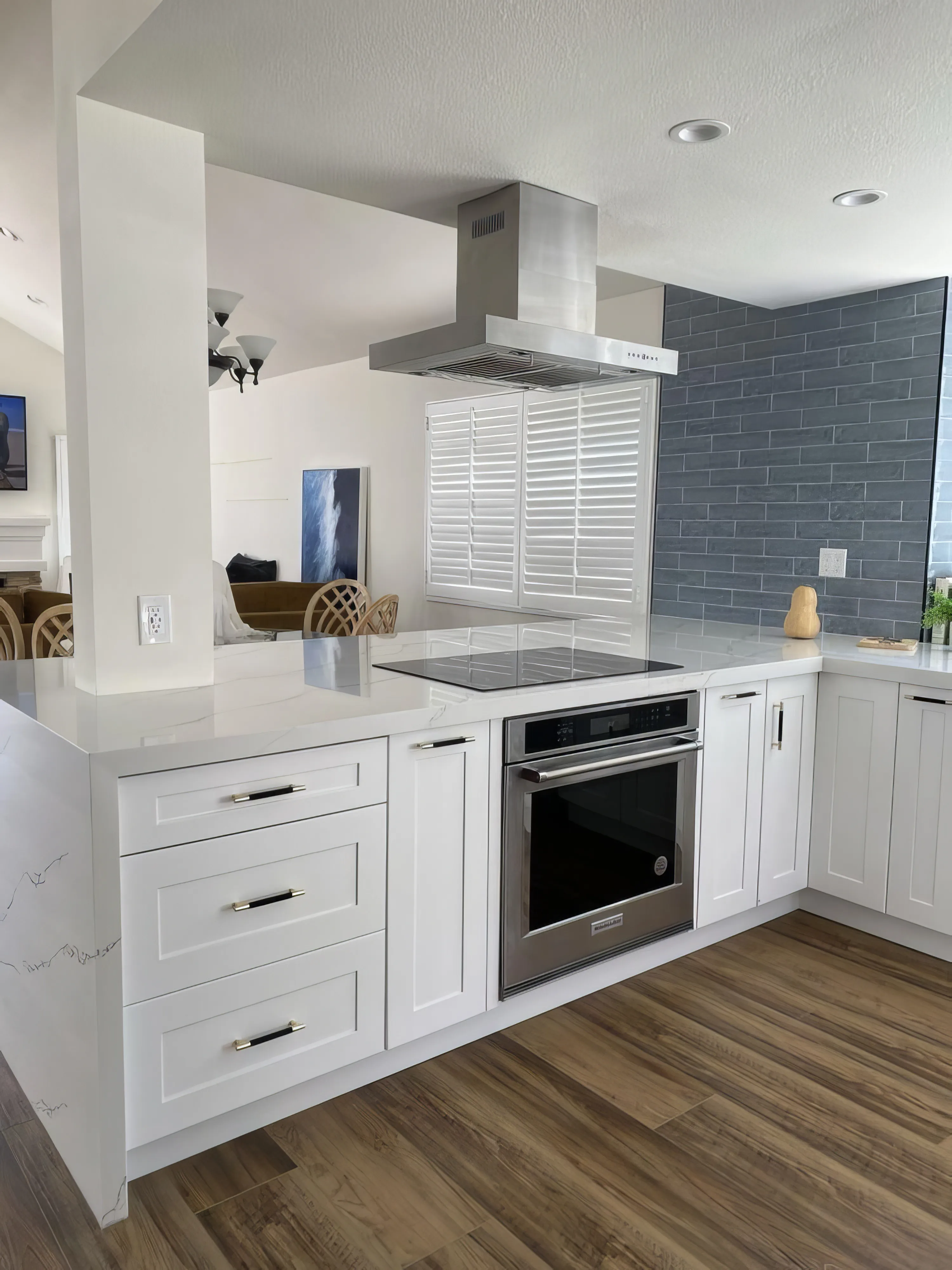
Indeed, you’ll find that routine cleaning is typically just a matter of soap and water, making porcelain backsplashes a practical choice for busy lifestyles. This low-maintenance nature means you can spend less time worrying about upkeep and more time enjoying your beautiful kitchen.
Disadvantages of Porcelain Kitchen Backsplashes
Once again, while porcelain kitchen backsplashes can bring a sense of elegance and durability to your space, there are some notable disadvantages to consider before making your decision. Understanding these drawbacks is vital to ensuring you end up with a renovation that meets your expectations and needs.
- Prone to Chipping and Cracking – Can break if hit with heavy objects.
- Cold and Hard Surface – Uncomfortable to touch and stand on for long periods.
- Difficult to Cut, Install fee – Requires specialized tools for accurate installation.
- Installation Complexity – Needs skilled installation for proper alignment and adhesion.
- Grout Stains – Grout can absorb dirt and require extra cleaning.
- Expensive High-Quality Styles – Premium porcelain can be costly
- …..
Cost Factors
After evaluating the aesthetic benefits, it’s important to consider the cost factors associated with porcelain kitchen backsplashes. These backsplashes can be more expensive compared to other materials like laminate or paint. You should be prepared for the initial investment, which includes not only the cost of the tiles themselves but also the potential expense of hiring a professional for installation.
- High Material Costs: Premium porcelain tiles can come with a significant price tag.
- Installation Fees: If you’re not a DIY expert, hiring a professional to ensure a flawless look can add to your overall budget.
- Long-term Value: While they might cost more upfront, their durability may save you money over time.

Thou need to assess whether the investment fits within your budget and aligns with the intended use of your kitchen. Carefully weighing these cost factors can help guide your decision.
Susceptibility to Cracking
Cost is another area where porcelain backsplashes may present concerns; they are not entirely impervious to issues like cracking. Although porcelain is renowned for its durability, it can still be susceptible to cracking due to strong impacts or improper installation. This can be particularly concerning in high-use areas of your kitchen where heavy pots and pans may accidentally hit the wall.
![]()
Also, cracks not only compromise the aesthetic appeal of your kitchen, but they can also lead to moisture seepage, which may result in mold growth or further damage. Regular maintenance and prompt repairs are necessary to mitigate these risks, ensuring that your $$$ investment remains intact.
Installation Challenges
Installation is another factor that can pose challenges when considering porcelain backsplashes for your kitchen. The tiles typically require precise measurements and a steady hand to ensure that they align evenly and aesthetically. If you lack experience with tile installations, you might find the project to be more daunting than anticipated.

Cracking can further complicate the installation process. You should take extra care during assembly to prevent accidents, as even a small misstep can lead to costly replacements. Additionally, the labor involved in the process can extend the timeline of your project, which may be less than ideal if you’re working with a tight schedule. By fully understanding these installation challenges, you can make an informed decision and prepare accordingly, setting you up for success in your kitchen renovation journey.
Comparing Porcelain with Other Backsplash Materials
All backsplash materials have their unique advantages and drawbacks, and it’s important to understand how porcelain measures up against other common choices. The following table highlights the differences between porcelain and various backsplash materials to help you make an informed decision.
| Material | Pros & Cons |
|---|---|
| Ceramic | Pros: More affordable, wide variety of designs; Cons: Less durable than porcelain, prone to chips. |
| Natural Stone | Pros: Unique appearance, adds value; Cons: High maintenance, can stain easily. |
| Glass | Pros: Stylish, reflects light, available in various colors; Cons: More expensive, can show fingerprints and smudges. |
Ceramic vs. Porcelain
Comparing ceramic and porcelain tiles reveals some significant differences that can influence your choice for a kitchen backsplash. While both materials are made from clay and fired at high temperatures, porcelain is denser and stronger, making it more suitable for high-traffic areas. You may appreciate that porcelain is also less absorbent, which means it can resist stains and moisture more effectively than its ceramic counterpart.

Additionally, porcelain tiles tend to have a more extensive range of styles and finishes, including options that mimic natural stone or wood. This versatility may make it easier for you to match your backsplash with your overall kitchen design. However, ceramic tiles often come at a lower price point, making them a more budget-friendly option if you’re looking to save.

Glass vs. Porcelain
Glass tiles introduce a modern flair that can enhance your kitchen’s aesthetic, and they come in a wide range of colors and finishes. Glass can reflect light beautifully, making your space feel brighter and more open. However, you should consider that glass tiles can be more expensive and tend to show fingerprints and smudges more readily than porcelain tiles, requiring more frequent cleaning.

On the other hand, porcelain offers a practical alternative that is less prone to showing dirt and fingerprints. Its durability and moisture resistance make it an ideal choice for a kitchen setting, where spills and splashes are common. You might find that while glass tiles have a striking visual appeal, the ease of maintenance with porcelain can be a more significant factor in your decision-making process. For instance, if you frequently cook or host gatherings, opting for porcelain tiles could minimize the hassle of ongoing upkeep, allowing you to focus more on enjoying your space rather than constantly cleaning.
Natural Stone vs. Porcelain
Above all, natural stone brings a level of elegance and sophistication that is hard to replicate. It offers unique textures and colors that can add a luxurious feel to your kitchen. However, you should be aware that natural stone requires significant maintenance to keep it looking its best, as it is often porous and can easily stain without proper sealing.

In contrast, porcelain tiles offer a consistent and durable surface that mimics the elegance of natural stone while requiring less maintenance. While you may love the rich hues and organic patterns of various natural stones, the long-term upkeep can be daunting. Plus, the durability of porcelain tiles can save you money in the long run, as they are less likely to chip or scratch compared to natural stone options. This means you can enjoy a beautiful kitchen backsplash without the high maintenance costs associated with natural stone.
Expert Opinions on Porcelain Backsplashes: Insights from a Guilin Cabinets Contractor
As a Guilin Cabinets Contractor, we’ve seen firsthand how porcelain backsplashes can enhance the look and function of a kitchen. While they are a popular choice for many homeowners due to their durability and aesthetic appeal, it’s important to consider both design and practicality when selecting this material for your kitchen. Here’s a closer look at expert insights on porcelain backsplashes:
Insights from Interior Designers
With their extensive experience in the field, interior designers often cite *porcelain backsplashes* as both *stylish and practical*. Many professionals appreciate the wide variety of colors and patterns available in porcelain, allowing you to tailor your choice to complement your existing kitchen decor. Designers often point out that this material can mimic the appearance of natural stone or other high-end materials at a lower cost, making it a popular choice among cost-conscious homeowners.
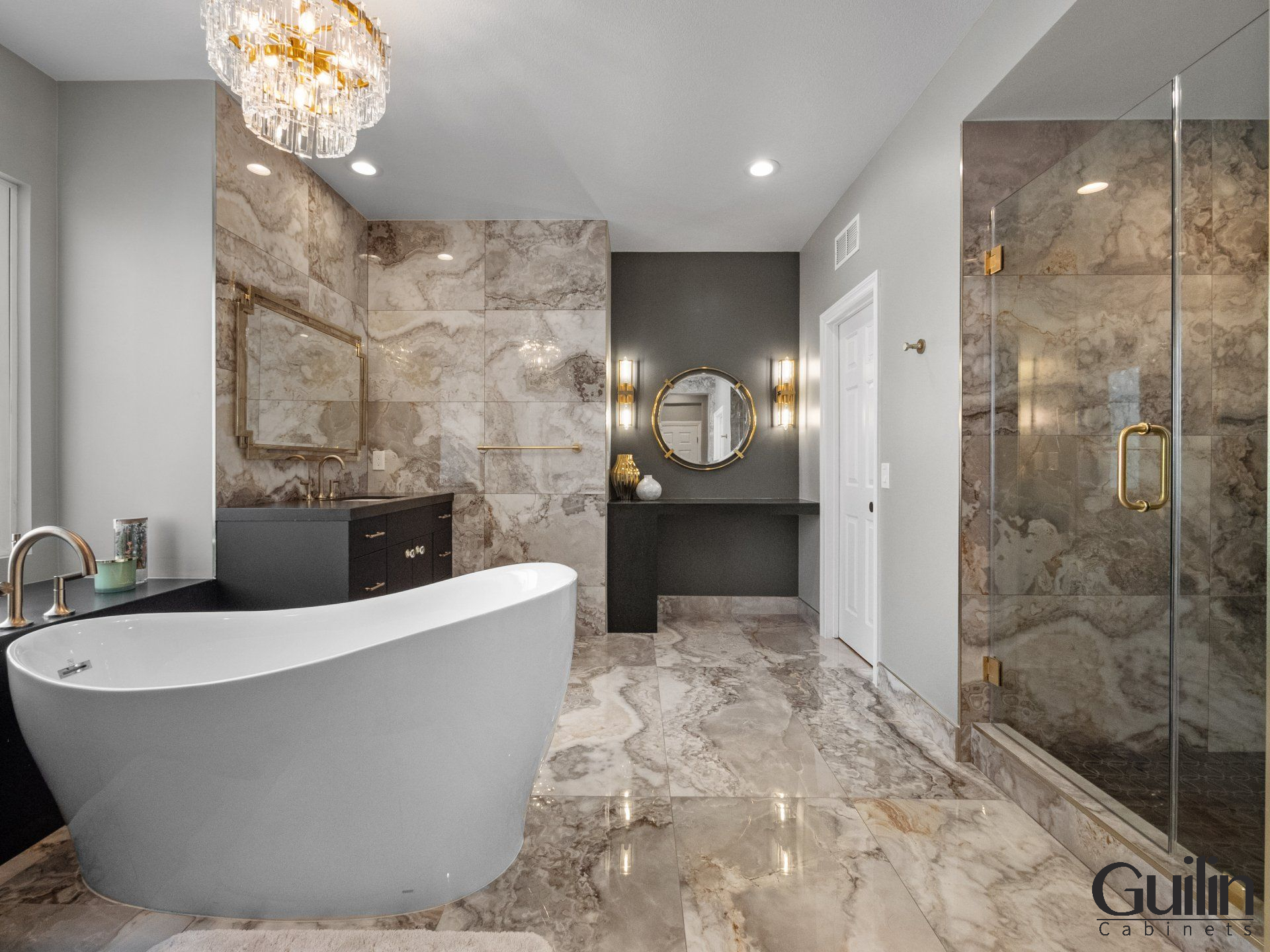
However, designers also caution against the potential pitfalls of porcelain. They note that while it is easier to clean than some other materials, it can chip or crack if subjected to heavy impacts. Thus, careful consideration of your lifestyle and kitchen usage is critical before committing to this choice.

Testimonials from Homeowners
Opinions from homeowners reveal a mix of satisfaction and caution regarding porcelain backsplashes. Many have praised the material for its ease of maintenance, stating that it requires minimal effort to keep looking *fresh and clean*. Several homeowners have highlighted its resistance to moisture and stains, which is particularly beneficial in a kitchen setting where spills and splatters are commonplace.
=> Read More:

Insights from homeowners also indicate that while they enjoy the appearance of their porcelain backsplashes, some have experienced issues with chipping. Reports of minor damage have led some to wish they had opted for a more resilient finish. These testimonials underscore the importance of understanding how porcelain will perform in your specific kitchen environment before making a final decision.
Feedback from Real Estate Professionals
An interesting aspect of the conversation surrounding porcelain backsplashes comes from real estate professionals who often evaluate kitchen trends when recommending upgrades to clients. Many agents agree that a *well-installed porcelain backsplash* can enhance the overall value of your home. They often emphasize that such a backsplash adds *visual interest* and can elevate a kitchen from average to exceptional.

A number of real estate pros also express caution, advising that while porcelain backsplashes are appealing, they might not always yield a high return on investment compared to other materials like *natural stone or glass tiles*. Thus, if you are considering selling your home in the near future, it’s important to weigh the costs against potential resale benefits before making your decision.

Conclusion / Final Words
On the whole, choosing a porcelain kitchen backsplash offers a blend of elegance and practicality that can enhance your cooking space. The durability of porcelain ensures that your backsplash can withstand the daily wear and tear of a bustling kitchen, and its water-resistant properties make it easy to clean and maintain. Additionally, the wide variety of designs, colors, and textures available means you can easily find a porcelain tile that suits your personal style and complements your overall kitchen décor. However, you should also consider the potential drawbacks such as the initial cost and the need for professional installation,…. which can add to your project’s total expenses.
Request Consulting From Guilin Cabinets
Looking to elevate your kitchen with a beautiful porcelain backsplash? Reach out today for a consultation with a skilled Guilin Cabinet Contractor. We’ll work with you to choose the ideal style, provide expert guidance on installation, and ensure your project meets your budget and vision. Don’t wait— contact us now to get started on your kitchen transformation!
=> Related Service: Full Kitchen Remodel Service in California | Guilin Cabinets
Guilin Cabinets is a remodeling contractor, and cabinet manufacturer in Irvine, California. We specialize in custom cabinets, closets, bathrooms, and kitchen remodeling. Our expert designers can help you design your dream spaces within your budget. Visit our luxurious Irvine showroom and design center to see a wide variety of cabinets, countertops, flooring, tiles, and more.

FAQs About Porcelain Backsplashes
Is porcelain a durable material for kitchen backsplashes?

Yes, porcelain is highly durable and resistant to chipping and cracking. It can withstand the daily wear and tear typical of kitchen environments, making it an excellent choice for backsplashes.
How does porcelain compare to ceramic tiles for backsplashes?

Porcelain is generally denser and less porous than ceramic tiles. This means porcelain is more durable and resistant to water absorption, making it better suited for use in kitchens where spills and moisture are common.
What maintenance is required for a porcelain backsplash?
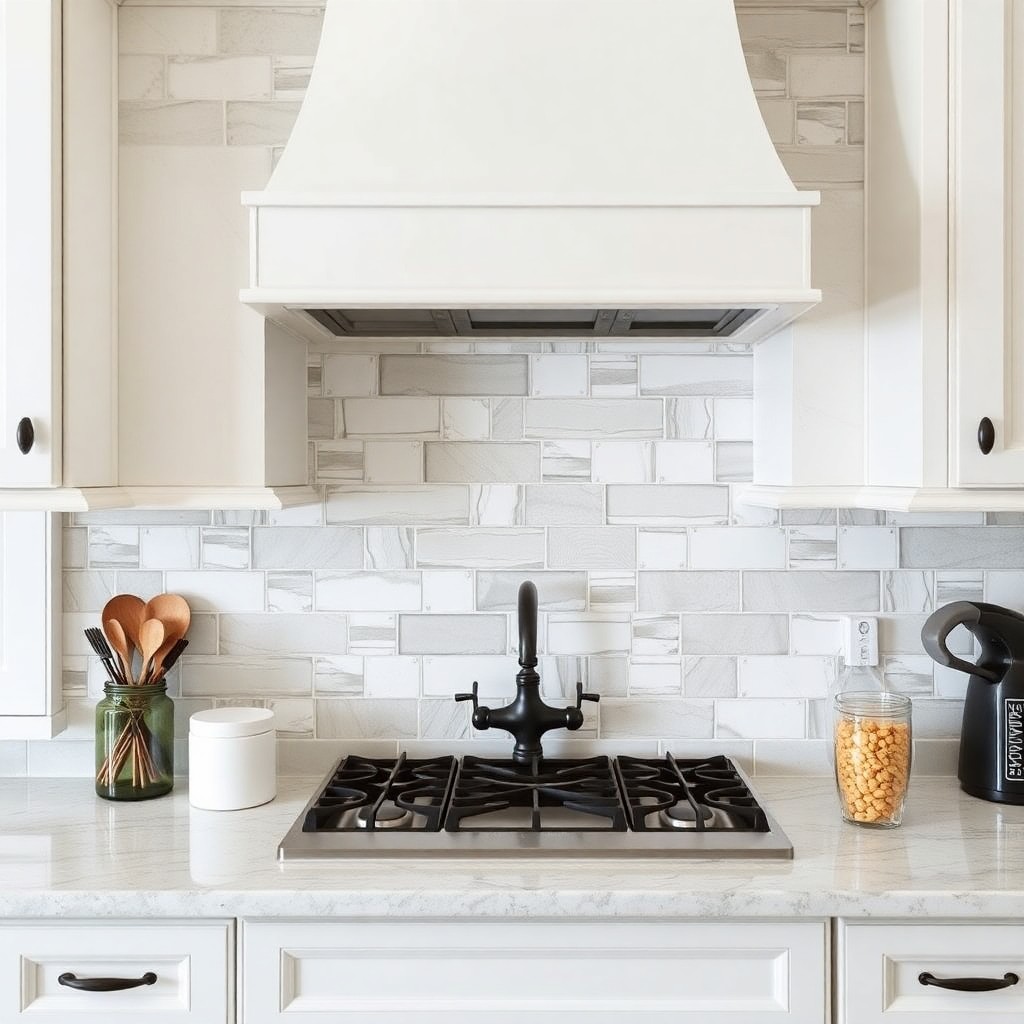
Porcelain backsplashes are very easy to maintain. Their non-porous surface requires minimal effort for cleaning, usually just a damp cloth or mild cleaning solution to keep them looking new.
Are there design options available for porcelain tile backsplashes?

Absolutely! Porcelain tiles come in a variety of designs, including marble look, mosaic patterns, large format sizes, glazed finishes, and unglazed finishes, allowing homeowners to achieve the desired aesthetic for their kitchen.
Is the cost of porcelain tiles higher than ceramic tiles?

Yes, porcelain tiles are typically more expensive than ceramic tiles, mainly because of the more intricate and labor-intensive manufacturing process. Porcelain is made from finer, denser clay and fired at higher temperatures, which results in a harder and more durable material. This additional production time and effort contribute to the higher cost about 30% compared to ceramic tiles, which are simpler to produce
Can I use porcelain tiles in high-moisture areas besides the kitchen?

Yes, due to its water-resistant properties, porcelain is also a great option for other high-moisture areas such as bathrooms and laundry rooms. Its durability and ease of cleaning make it versatile for various applications.
What are some alternatives to porcelain tile for kitchen backsplashes?

Alternatives to porcelain tiles include ceramic tiles, glass tiles, natural stone, and metal backsplashes. Each material has its own set of advantages and disadvantages, such as different levels of durability, maintenance needs, and aesthetic appeal, so it’s imperative to consider the specific requirements of your kitchen.













